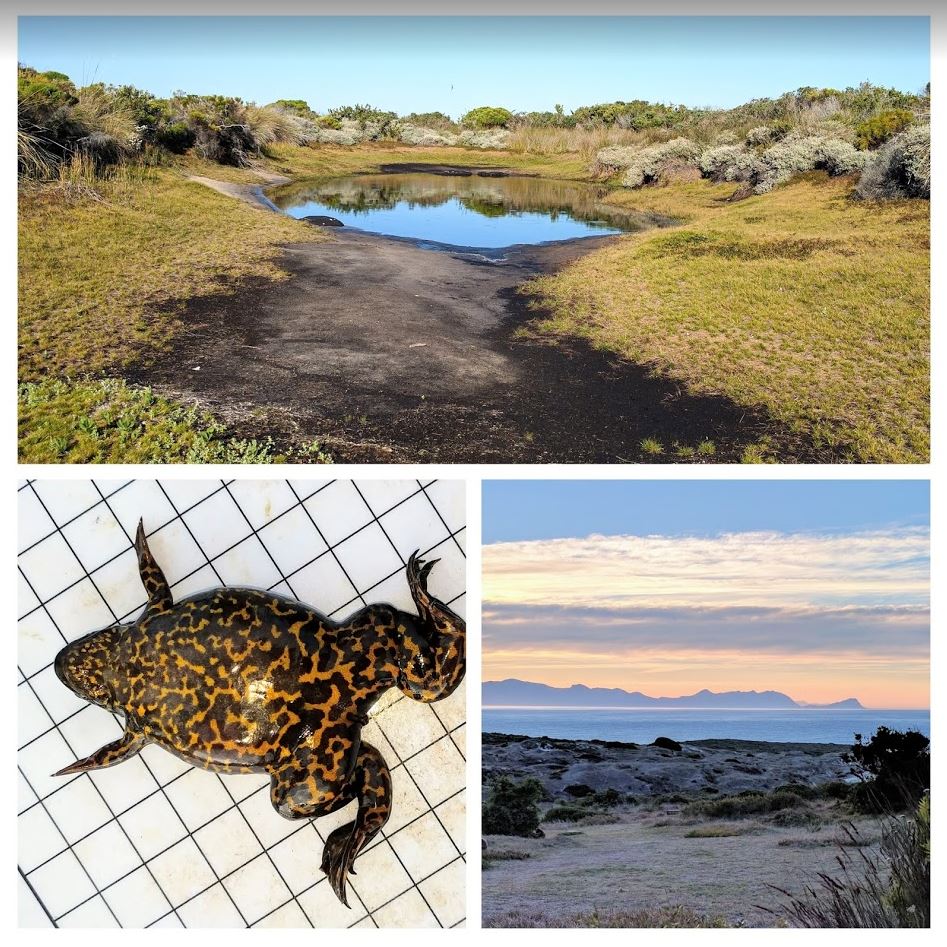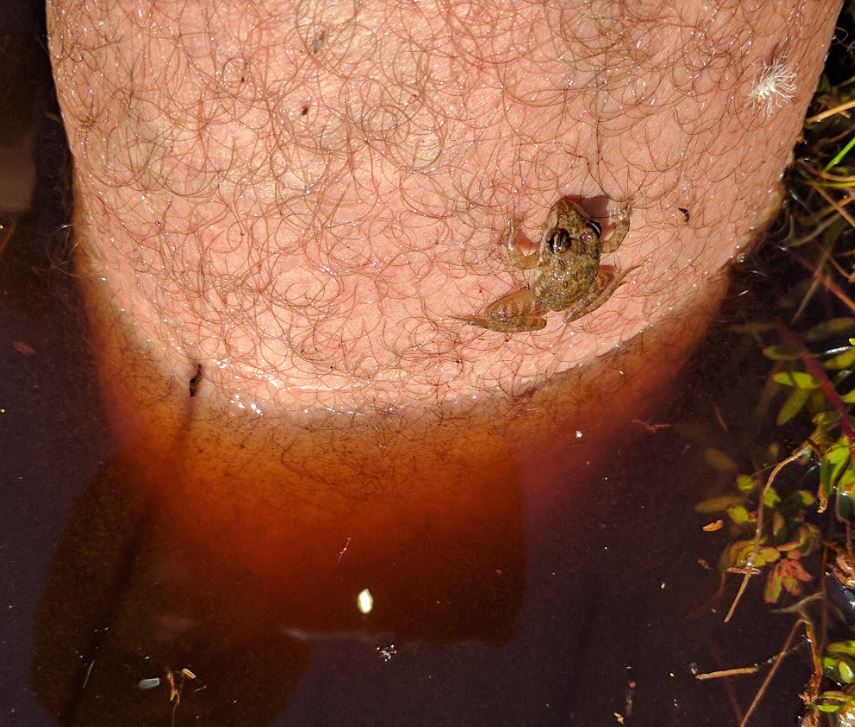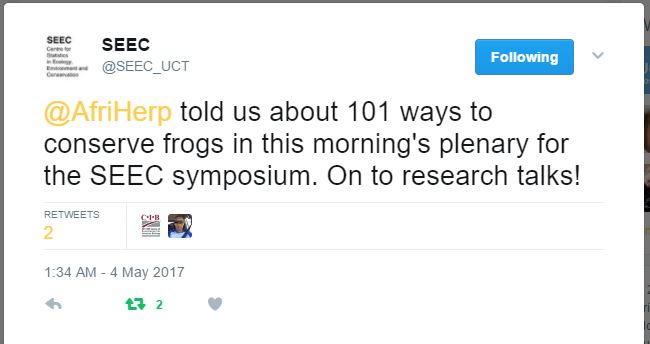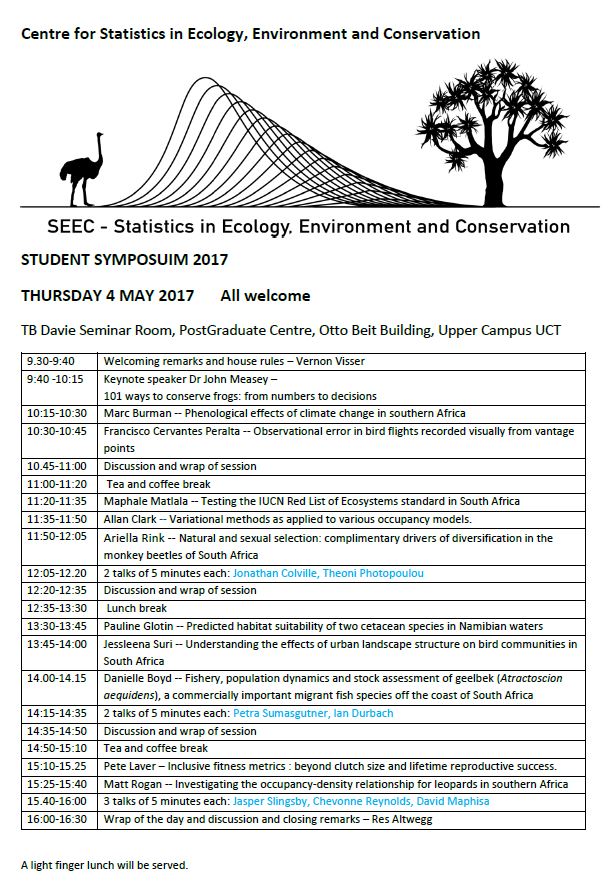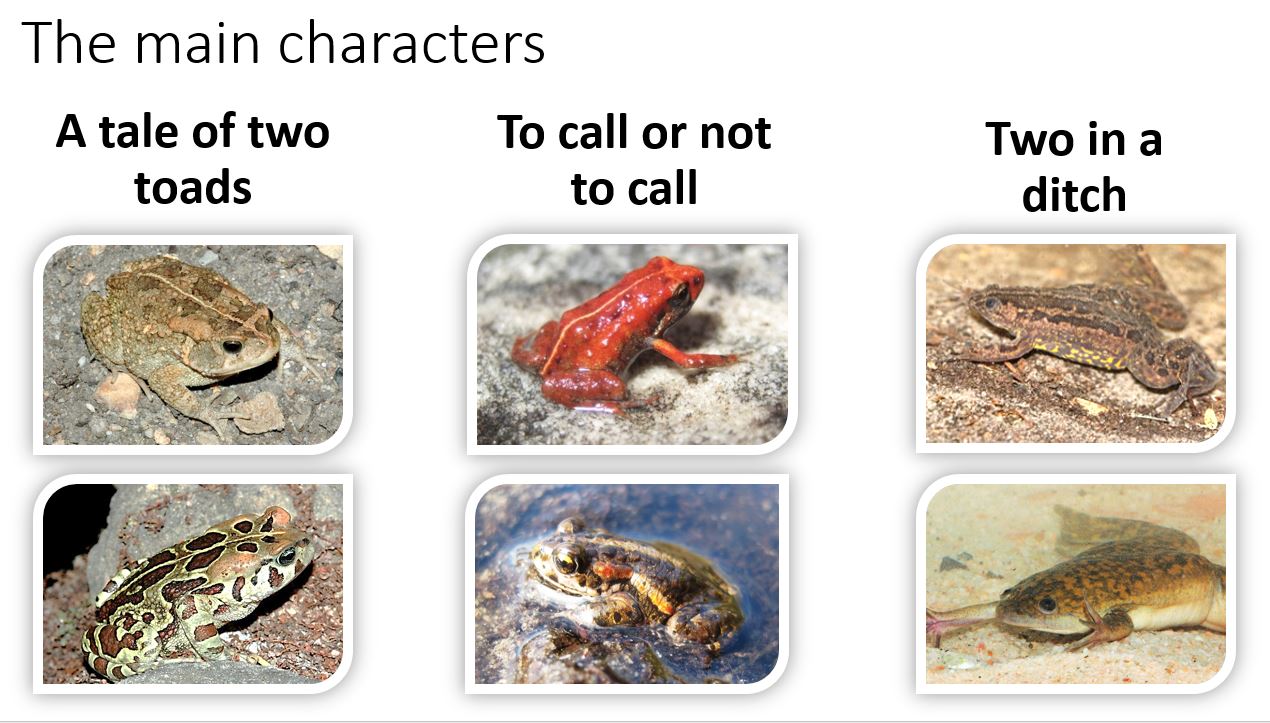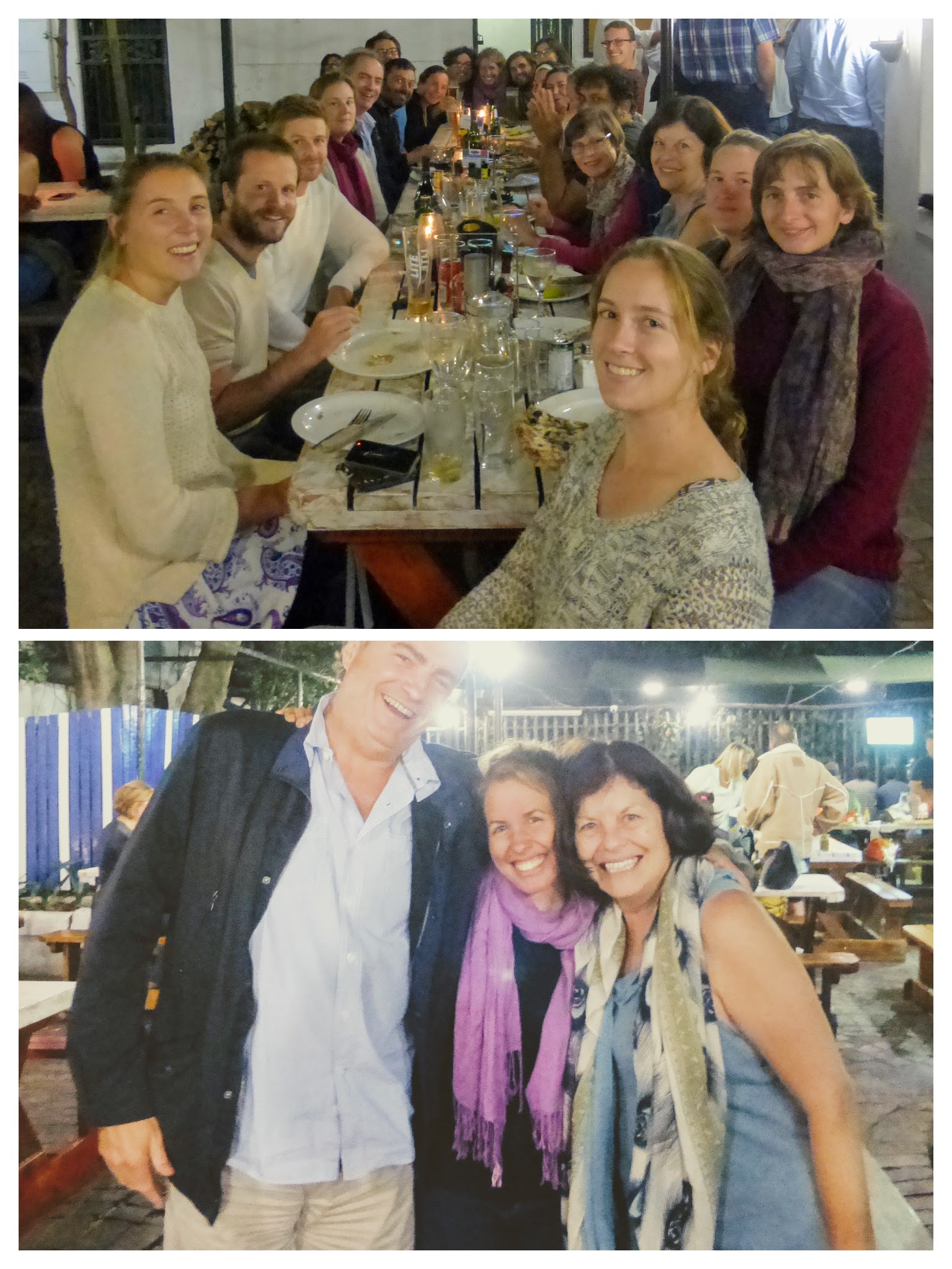Hybridisation, Competition and Predation: threats to one species of Xenopus from another
The Cape platanna, Xenopus gilli, is not as well-known as its larger transcontinental invading sibling species, the African clawed frog (Xenopus laevis). In fact, it is restricted to a small area in the far southwest of the continent where it shares its remaining and highly disturbed habitat with its much larger sibling. The extent of the habitat disturbance is so large that the IUCN has considered this species to be threatened since the 1980s. The most recent assessment suggests that the Cape platanna is Endangered, but that instead of the decline being fuelled by habitat loss, it is now the threat from hybridisation, competition and predation by the African clawed frog. Assessments of threats on the Red List most often result from discussions by teams of experts.
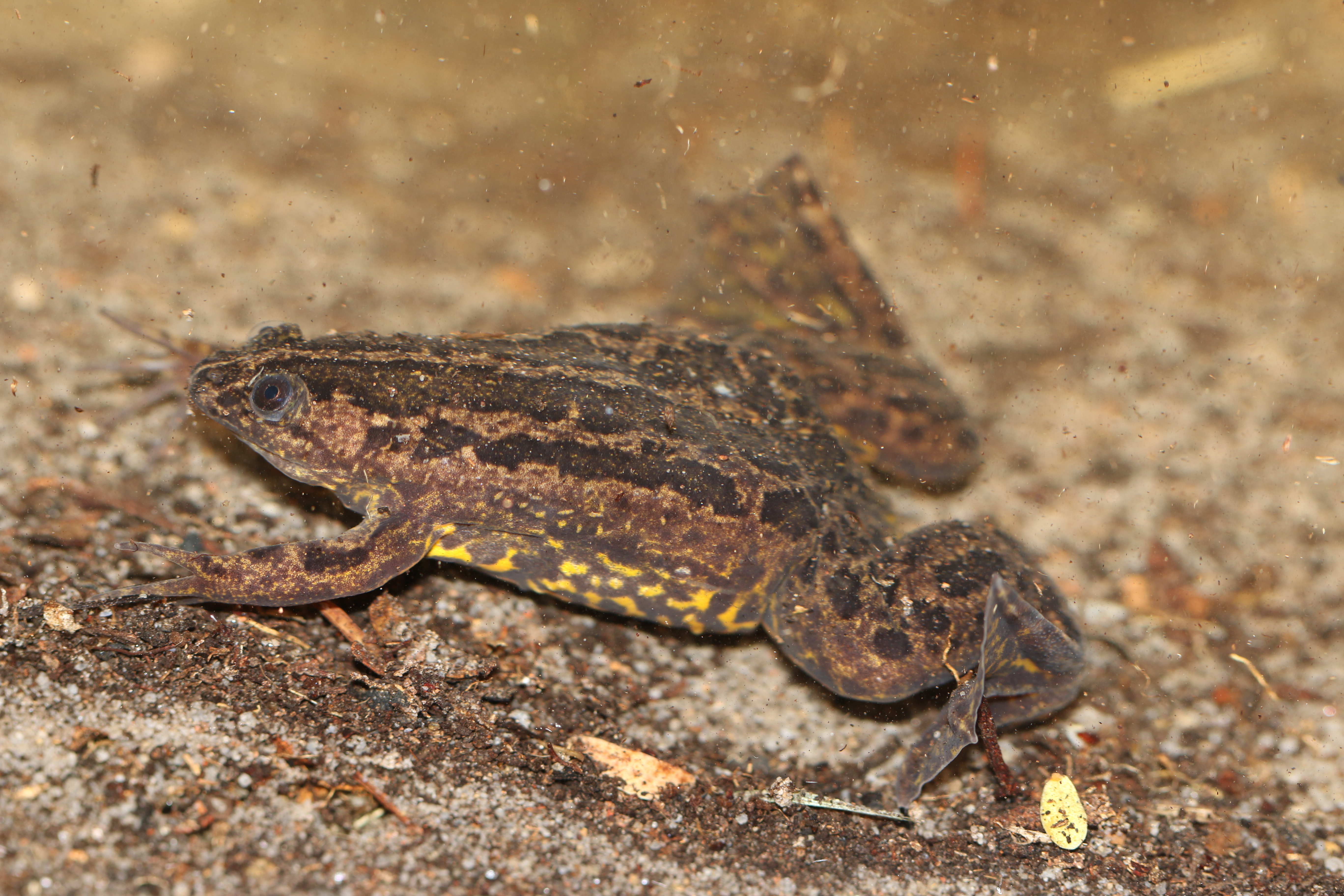
Two articles recently published in PeerJ and Scientific Reports by teams from the C·I·B have now clarified the nature of these threats.
It has been known since the 1970’s that the Cape platanna hybridises with the African clawed frog, and it has long been thought that back crossing of these hybrids represent a genetic threat to the Cape platanna, so called introgression.
In the first study, published in the journal Scientific Reports, C·I·B senior researcher, John Measey, and C·I·B visiting fellow Ben Evans and his students from McMaster University, compared samples of these two species from 1994 and 2014 to determine whether there have been any changes in the level of introgression over this 20 year period. In addition, they sampled in two areas, one where management removes the African clawed frog and another where they are left. Although, hybrids of these two species have previously been found in both areas, the team failed to find any evidence of introgression. This suggests that while hybridisation is a threat to the already limited numbers of individuals which are not mating with the correct species, the threat from genetic introgression is absent.
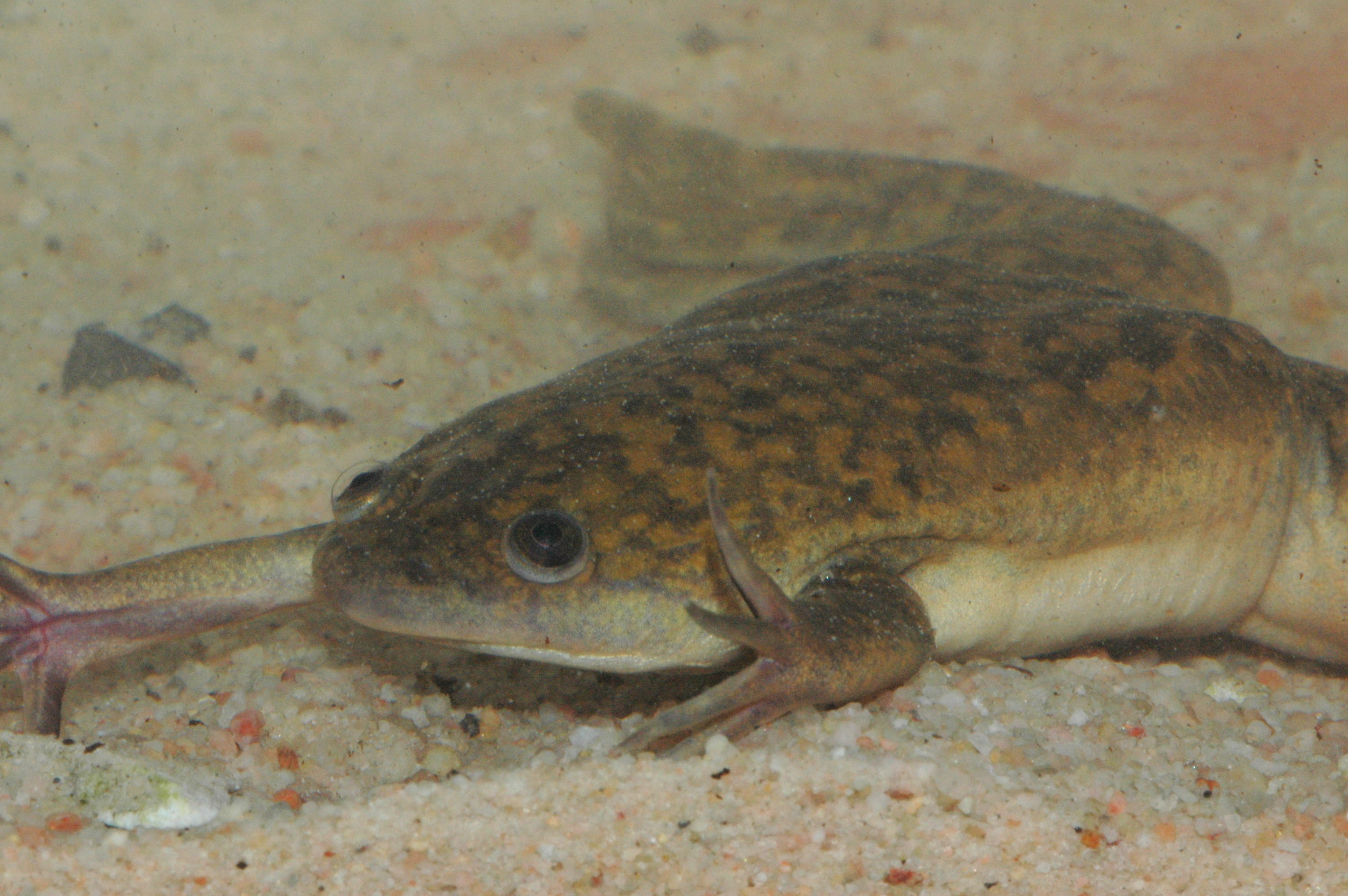
These same two sites also formed the basis for a second study which aimed to determine the level of competition between these two species through their diet. In this study, published in the journal PeerJ, John Measey, his students and collaborators at the Zoologisches Forschungsmuseum Alexander Koenig (Germany) found that the diet from the two species almost entirely overlapped. Surprisingly, at one site the majority of the food of both these aquatic predators were the tadpoles of other amphibians. This sort of anurophagy is more common in these frogs than previously reported.
In a rather grizzly surprise, these researchers even found an example of the larger African clawed frog with a small Cape platanna in its stomach! The study clearly showed that both competition and predation are important ways in which the African clawed frog impacts on the Cape platanna.
“Finding the smoking gun in the form of an ingested Cape platanna was really impressive” said Measey, “we often speculate about these things, but it’s rare to find examples. Now that we know that the impact of predation and competition is large, we can take steps to extend the programme of removing the large African clawed frog, thereby helping to conserve the Endangered Cape platanna.”
To read the papers:
Furman, B., Cauret, C., Colby, G., Measey, J. & Evans, B.J. (2017) Limited genomic consequences of hybridization between two African clawed frogs, Xenopus gilli and X. laevis (Anura: Pipidae). Scientific Reports7(1):1091
Vogt S, de Villiers FA, Ihlow F, Rödder D, Measey J. (2017) Competition and feeding ecology in two sympatric Xenopus species (Anura: Pipidae) PeerJ 5:e3130. https://doi.org/10.7717/peerj.3130
